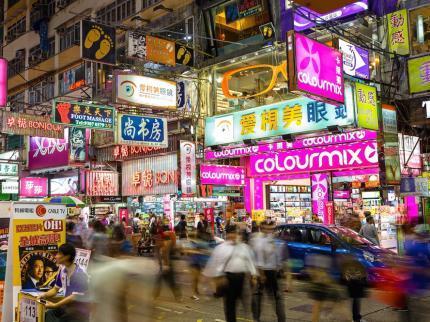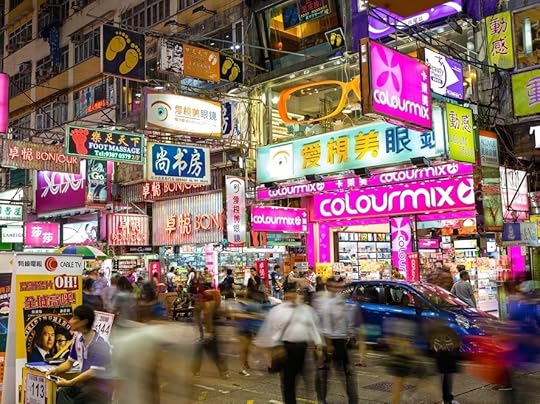Hong Kong Protests Traders from China

On Sunday, more than a hundred protesters—most of them young—mobbed New Town Plaza, a mall in the Sha Tin District of Hong Kong. There, they clashed with shoppers and hounded tourists from mainland China.
Police tussled with the demonstrators, wielded batons, used pepper spray, and made arrests during the second consecutive Sunday of demonstrations against “parallel traders,” individuals buying goods in Hong Kong and lugging them across the border to China. On February 8th, there were similar protests in Tuen Mun, an area also close to the China border.
For years, residents of Guangdong Province—from quick-buck artists to concerned parents—have entered Hong Kong, a special administrative region of China, and bought foodstuffs and household items to bring back to the mainland.
The trade eventually became a hot political issue. The last time I walked across the border from Hong Kong to China—in November 2013, at the Lo Wu crossing—Hong Kong Immigration was blaring warnings over loudspeakers about the smuggling of powder—not heroin or cocaine, but milk.
Foreign milk powder is valuable in the mainland because of the continuing series of scandals involving adulterated products. In 2008, for instance, an estimated 300,000 Chinese children suffered kidney damage and at least six infants died because local producers were lacing milk with melamine, an industrial chemical. Mainlanders bought so much powdered milk in Hong Kong that the transportation of more than 1.8 kilograms of it from the territory was made a criminal offense in 2013. On Sunday, marchers shouted, “Mainlanders go back to the mainland!” and “Drink your own milk powder!”
So why should free-spending tourists from the mainland spark outbursts of violence in Hong Kong? The mainlanders, after all, boost the local economy, spending an average of more than $1,000 per trip. And these days they make almost 50 million visits to Hong Kong each year.
But the influx—there were only several thousand visits in 2003—has clogged Hong Kong’s transportation infrastructure. Moreover, stores started catering to big-spending Chinese and shunned local residents. And then mainlanders—“locusts,” in Hong Kong parlance—started clearing off the shelves in supermarkets, driving up prices. Some parallel traders make multiple trips a day.
Why have tensions over parallel trading boiled over now? Observers hear political overtones. Most of the protesters during the last two Sundays were of student age, apparently veterans of the “Occupy” demonstrations that paralyzed portions of Hong Kong when tens of thousands of residents took over streets and plazas for 79 days starting in September, angry at Beijing’s plan to control elections for Hong Kong’s chief executive, the territory’s highest political official.
At the parallel trading protests this month, Hong Kong residents flew colonial-era flags, a symbol of defiance of Beijing. In Sha Tin, one of the flag-wavers was 13 years old.
“It’s been festering since Occupy,” said James Bang, a volunteer at the supply tents in last year’s demonstrations, referring to the sentiment propelling the parallel trading protests. “It is quite ugly.” As Bang explained, protesters “are not racist, horrible people but they feel like they’ve been ignored and trampled on and had their country taken away from them.” A Tuen Mun resident linked the February 8th demonstration in his neighborhood to the “Umbrella Revolution,” the name for last year’s protests, because in both “people became aware and start questioning.”
Some analysts say Beijing won in December because it was able to clear Hong Kong’s streets. That’s an incorrect interpretation. The pan-democrats are energized, more so than they have been in years, and the suppression of the Occupy movement has only increased their support in society.
Bai Xiaoyu, a researcher in the State Council’s Hong Kong and Macau Affairs Office, recently wrote of “radicalization” and “spontaneous movements” in Hong Kong. As people there speak of self-determination and independence from the Chinese regime Bai serves, there’s no need for written warnings. Chinese leaders can see for themselves that radicals are taking to the streets of Hong Kong and people there are telling Beijing to get out.
OG Image: Asia PacificChinaHong KongTradeDemocracy
Asia PacificChinaHong KongTradeDemocracy
Gordon G. Chang's Blog
- Gordon G. Chang's profile
- 52 followers



